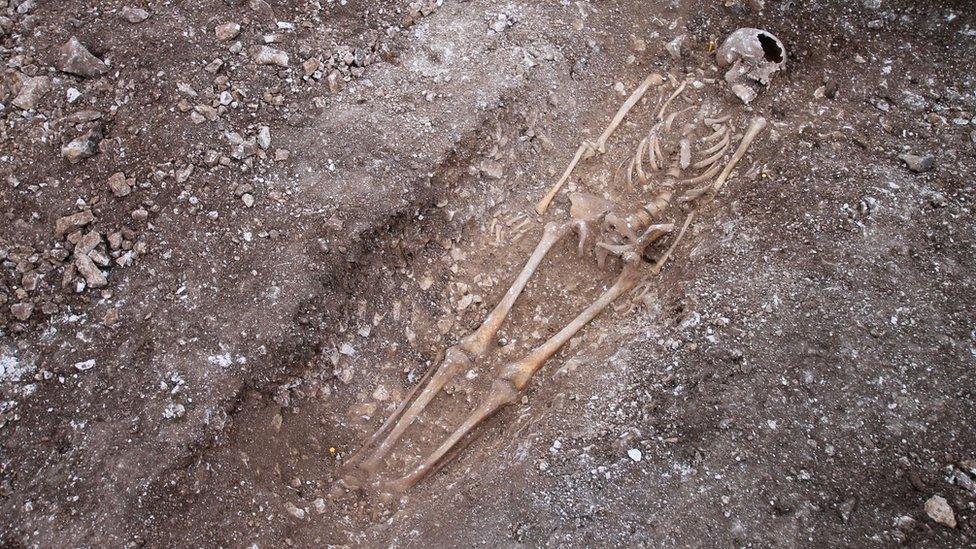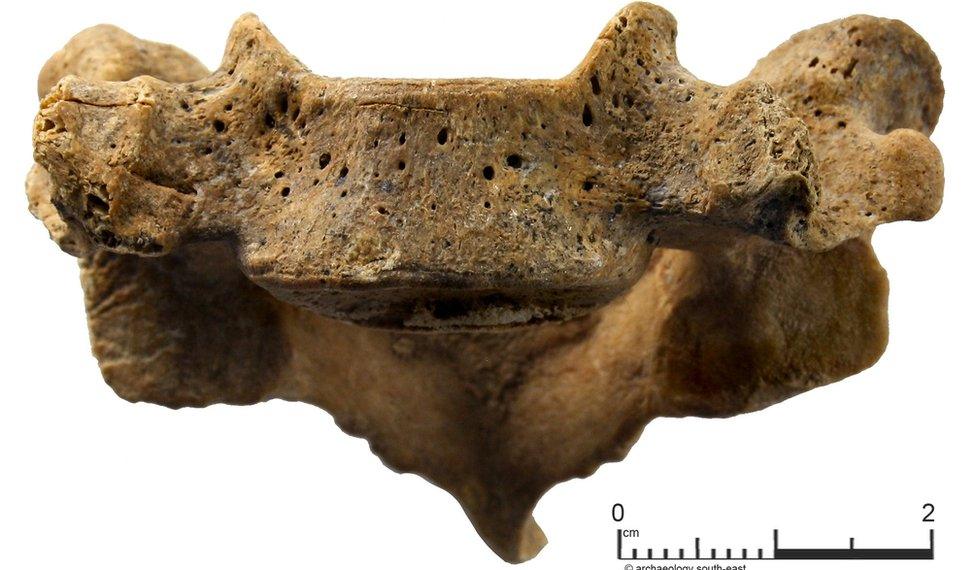South Downs skeleton 'executed 1,000 years ago'
- Published

The well-preserved skeleton, thought to be from the 11th Century, was found during excavations in the South Downs
A man whose remains were unearthed by construction workers was executed about 1,000 years ago, archaeologists believe.
The well-preserved skeleton, thought to be from the 11th Century, was found during excavations in the South Downs.
It is thought the man, found in a grave on Truleigh Hill near Shoreham, West Sussex, was aged between 25 and 35.
Bone analysis put the date of his death between 1010 and 1023, while cuts to the neck pointed to a violent end.
The skeleton was found intact, but with no signs of a coffin, with only a few bones missing from his hands and feet in 2015.

One of the man's vertebrae shows the cut marks which would have proved fatal
Jim Stevenson, Project Manager for Archaeology South East, said: "Radiocarbon dating has revealed that the skeleton is most likely to be an execution burial of the later Anglo Saxon period.
"Most significantly two cut marks made by a sharp blade or knife were found at the mid length of the neck, which would have proved fatal."
Researchers also found evidence of trauma including a well-healed fracture on the left arm, and evidence of stress on the vertebrae due to repeated bending/twisting motions.
The remains were found during excavations for onshore cabling from the Rampion windfarm off the Sussex coast.
E.On, which operates Rampion, said other archaeological remains dating from as early as the Neolithic and Bronze ages were also uncovered during construction of the windfarm.
The burial site was not within a Christian graveyard, as would have been expected for the time, an E.On spokesman said.